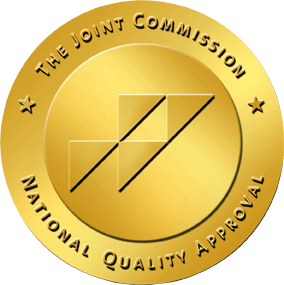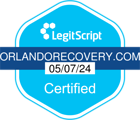Benzodiazepine drugs are common medications that are used to treat many different medical conditions. Benzo drugs like clonazepam (Klonopin), lorazepam (Ativan) and Diazepam (Valium) represent some of the most commonly prescribed drugs in the United States.
However, as Schedule IV controlled substances, benzos can lead to abuse, addiction and dependence. For this reason, it is important to be aware of the signs and symptoms of benzo addiction if you or a loved one take a benzo.
What Are Benzodiazepines?
Benzodiazepine drugs are used to treat a variety of physical and psychological ailments in the United States. They are central nervous system depressants, so they can relax muscles and relieve anxiety.
Physicians may prescribe a benzodiazepine for medical conditions like:
Treatment Can Be Life Changing
Whether you are struggling with addiction, mental health or both, our expert team is here to guide you every step of the way. Don’t wait— reach out today to take the first step toward taking control of your life.
- Anxiety
- Insomnia
- Alcohol withdrawal
- Seizure control
- Muscle relaxation
- Inducing sedation for uncomfortable procedures
Types of Benzodiazepines
All benzodiazepines have certain characteristics in common. For example, they are all CNS depressants and Schedule IV controlled substances. However, each drug has certain factors that make it unique among other benzodiazepines.
Overall, benzodiazepines are similar in how they affect the brain. However, different types contain different potencies, durations of action and receptor site attractions. Some benzodiazepines work better than others in treating particular conditions.
Commonly prescribed medications within the benzodiazepines drug category include Valium and Xanax. They are some of the most commonly prescribed anti-anxiety medications in the United States.
| Benzo | Xanax | Klonopin | Valium | Ativan | Librium | Restoril |
| Generic name | Alprazolam | Clonazepam | Diazepam | Lorazepam | Chlordiazepoxide | Temazepam |
| Route of administration | Oral solution, Fast-acting tablets, Long-acting tablets, Orally disintegrating tablets | Tablets | Oral solution, Tablets, Rectal gel | Oral solution, Tablets | Capsules | Capsules |
| Common uses | Anxiety, Panic | Seizures, Panic | Anxiety, Sedation, Seizures, Alcohol withdrawal | Anxiety, Sedation, Seizure | Alcohol withdrawal, Anxiety | Sleep |
| Peak effect | Within one to two hours | Within one to four hours | Within 1.5 hours | Within two hours | Several hours | Within 1.6 hours |
| Duration of action | Up to 11 hours | Up to 12 hours | Varies | Varies | Varies | Varies |
| Half-life | Up to 16 hours for long-acting tablets, up to 12.5 hours for other formulations | Up to 50 hours | Up to 50 hours | Up to 20 hours | Up to 30 hours | Up to eight hours |
Benzodiazepine Addiction
Benzodiazepines are classified as Schedule IV controlled substances. Schedule IV means they carry the risk of abuse, dependence and addiction. Further, these drugs have been chronically abused for decades and cause thousands of drug overdoses each year.
Are Benzodiazepines Addictive?
Benzos’ calming properties make them important medical tools. However, they also make them highly addictive and potentially dangerous in some cases.
Intentional misuse of prescription benzodiazepines occurs in around 20% of those who take the drug. Some people combine the medication with alcohol, opioids or illicit drugs to increase its effects. However, this can lead to dangerous or even fatal outcomes. This is because it causes brain activity to slow down (CNS depression).
Benzo abuse on its own also heightens the risk of dangerous effects, including dependence, addiction and overdose. Additionally, people who misuse benzodiazepines also have a higher risk of developing cognitive problems over the long term.
How Long Does It Take to Get Addicted to Benzos?
No hard evidence exists on how long it takes to get addicted to benzos. Addiction is a complicated psychosocial phenomenon. It can cause someone to rely on a substance and continue taking it, even though they know it’s harmful.
While some people may reach this point quickly, others may take much longer. As a controlled substance, the risk of developing an addiction to a benzo is always present, no matter how long the person has been on the drug.
Benzo Addiction Statistics
Some benzo addiction statistics include:
- Overall, fewer than 1% of people will develop a benzo use disorder during their lifetime
- More than 200,000 emergency room visits a year are linked to benzo use:
- More than half of these visits involve benzo abuse
- About a third of these visits involve attempts at self-harm with benzos
- More than 82% of these visits involve the benzo being taken with other substances
- More than half of patients visiting the emergency room for a benzo are between the ages of 15 and 34
- Benzo misuse accounts for about 20% of overall benzo use
Signs and Symptoms of Benzodiazepine Addiction
At normal prescription doses, benzodiazepines relieve anxiety and sleep problems for people with diagnosed medical conditions. Benzos are usually well-tolerated medications. They only cause mild side effects, like drowsiness or dizziness. These side effects may be much more pronounced with increased doses.
Signs and symptoms of benzodiazepine abuse may include the following:
- Drowsiness
- Slurred speech
- Euphoria
- Problems concentrating or thinking
- Memory problems
- Involuntary eye movements
- Lack of inhibition
- Dizziness
- Depression
- Coordination problems
- Slowed breathing
- Low blood pressure
Signs of chronic drug abuse can be seen through changes in appearance and behavior. They changes may even disrupt relationships and work performance. These can include:
- Spending time with a different social group
- Not caring about appearance
- Worse performance at school or at work
- Missing school or work
- Losing interest in favorite activities
- Getting in legal trouble
- Changes in eating or sleeping habits
- Problems with family members and friends
Effects of Benzo Addiction
Benzodiazepines can be beneficial for short-term management of anxiety. However, chronic use may lead to tolerance and subsequent dependence. Over time, this can cause a number of long-term, adverse side effects. Some of these risks are unavoidable, even when benzodiazepines are used as prescribed.
The side effects of benzo use can influence physical and mental health, as well as overall functioning. These hindrances in functioning can lead to serious injury or even death. A person misusing benzodiazepines is likely to appear drowsy, lack coordination and be aggressive and irritable. They may have depression or memory problems.
Coma or death may occur when benzodiazepines are abused with other drugs. Hundreds of thousands of people go to US emergency rooms each year for problems with benzodiazepine abuse.
Common Side Effects of Benzodiazepine Addiction
Some common side effects of benzodiazepine abuse include:
- Inability to hold down a job
- Homelessness
- Lack of interpersonal relationships
- Increasing legal problems
- Worsening mental and physical health
- Self-harm
- Depression or anxiety
- Suicidal thoughts and behaviors
Long-Term Effects of Benzo Addiction
Although the specific risks of long-term benzo addiction are not known, long-term benzo use is linked to a variety of side effects. These effects can be chronic and impact your overall health and well-being. They include:
- Cognitive impairment, which may be irreversible
- Increased risk of car accidents
- Increased risk of hip fractures
For these reasons, it is important to seek help for a benzo addiction as soon as possible if you or a loved one starts struggling with the drug. Early intervention is key to maintaining your health and preventing long-term effects.
Benzodiazepine Overdose
A benzo overdose on its own is rarely fatal. Unfortunately, benzos are commonly abused alongside other substances. This combination of drugs can be fatal. On its own, a benzo overdose often causes drowsiness that can range from mild to severe. In rare cases, it can lead to slowed breathing.
However, combining benzos with other CNS depressants like alcohol or opioids can severely harm the brain. It can even lead to a deadly overdose, often linked to slowed breathing. Benzo overdoses should be treated as a medical emergency. This is because benzos are so commonly abused alongside other medications. If you suspect someone has overdosed on a benzo, you should call 911.
Benzo Withdrawal and Detox
Withdrawal symptoms can occur when stopping benzos abruptly. This is even more likely in someone who has abused them. Symptoms may range from uncomfortable to life-threatening. The intensity of these withdrawal symptoms depends on how long someone has taken benzodiazepines and the dosage. Longer periods of use and higher dosages typically lead to more severe symptoms.
Symptoms typically include:
- Anxiety
- Insomnia
- Restlessness and Agitation
- Irritability
- Impaired Concentration
- Memory Problems
- Muscle Tension or Aches
- Seizures
Safe and successful recovery from benzodiazepine addiction requires professional help and a structured plan. Withdrawal can be challenging. But with the right support, you can work towards a healthier, addiction-free life. Don’t wait to seek assistance and explore treatments designed for you.
Benzodiazepine Addiction Treatment
Recovering from a benzodiazepine addiction can be a difficult task. Fortunately, professional treatment can help make the process easier and more effective.
The first treatment step is medical detox. It helps individuals safely eliminate benzodiazepines from their bodies. This happens in a supportive and calm environment.
After detox, many clients are advised to go to inpatient treatment. Inpatient treatment is a comprehensive program where they live at the rehab center.
As recovery stabilizes, they usually move on to outpatient care. Outpatient care is less intense and offers more flexibility.
Whether a person receives inpatient or outpatient care, benzo addiction treatment will normally include the following components:
- Comprehensive evaluation and treatment planning
- Medication management and withdrawal monitoring
- Individual and group therapy sessions
- Planning for long-term aftercare
Inpatient Benzo Addiction Treatment
Inpatient rehab offers a chance to leave harmful situations and get treatment in a safe place with professional supervision. During inpatient rehab, patients live onsite and interact with staff daily.
Inpatient treatment gives round-the-clock care. This helps address co-occurring disorders, lasting withdrawal symptoms and cravings after detox. Comprehensive care and extra commitment make it one of the most effective treatment options available.
Outpatient Benzo Addiction Treatment
Outpatient rehab for benzodiazepine addiction is quite similar to inpatient rehabilitation. The difference is that clients do not stay at the facility. Instead, clients in outpatient treatment can live at home and resume daily responsibilities, such as work. They can also choose to live with family or friends who offer a supportive environment.
Outpatient rehab includes:
- Meeting with counselors in individual and group sessions
- Preparing for aftercare treatment
- Continuing medication to reduce remaining withdrawal symptoms
The specific schedule created for the client depends on their needs.
Get Help for Benzo Addiction Today
If you or someone you love needs treatment for benzodiazepine addiction, Orlando Recovery Center Drug and Alcohol Rehab can help. Our benzo addiction experts will help cleanse your body of benzos. Then, we can work closely with you to address the root causes of the addiction. Our goal is for you to remain benzo-free for good. Contact us today to speak with a knowledgeable Recovery Advocate and learn more about our treatment programs.










